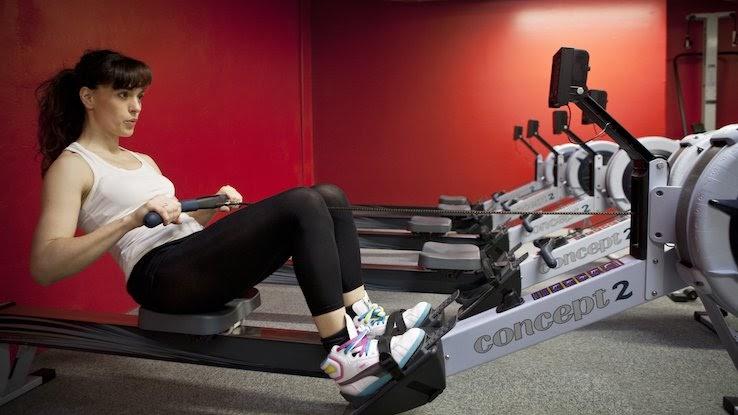Well Meet Again Some Sunny Day

My mom speaks in 10,000-steps-a-day terms: "I already took my 10,000 today," or "It's been a 14,000-steps day." Ever since I gave her a Fitbit in 2015 she's been a total convert. Recently, I snooped on her statistics, and she averaged 13,500 daily steps terminal month. She'd ever been a person who liked walking, but having a specific goal of a minimum of 10,000 daily steps helps her stay more active. Taking more steps a day has made information technology easier for her to lose a footling bit of weight and manage her loftier claret pressure.
I took to her on that and at present too similar to get my 10,000 steps a twenty-four hour period when possible. Only sticking to salubrious habits wasn't necessarily easy for me in 2020. Dissimilar me, my mom made no excuses and averaged almost 7,000 steps a day when Spain was in full lockdown between March and early June of 2020. She did it by pacing her actually-not-that-big Barcelona apartment. In those same weeks, I was sheltering in place in California and trying to get some activity past using a stationary wheel. The merely way I could brand the action attainable and not numbingly boring was by pedaling and reading at the same time.
The whole experience got me thinking: Are 10,000 steps a day really necessary? Was my tiresome pedaling equivalent to my previous frequent walks? And where did the whole 10,000 steps a day come from, anyway?
Even if you're non a natural-born walker like my mother, you yet should be finding other means to motion that are appropriate for your mobility level. The U.S. Department of Wellness and Human Services (HHS) recommends "that adults do at least 150 to 300 minutes of moderate-intensity aerobic physical activity a week, or 75 to 150 minutes of vigorous-intensity activity, or an equivalent combination of moderate- and vigorous-intensity activity" to prevent cardiovascular illness.

The system defines an activity equally "moderate-intensity" if a person can talk but not sing while doing it. During a vigorous-intensity activity, "a person cannot say more than a few words without pausing for a breath." That could exist a thirty-minute brisk daily walk — but as well a swim, run, rowing session or some biking.
A 2014 written report published in the International Journal of Behavioral Nutrition and Concrete Activity constitute an 11% reduction in hazard for all-crusade mortality — death from whatsoever cause — for a dose of 150 minutes per calendar week of walking and a reduction of 10% for the same number of minutes of cycling. The study — with 280,000 walking participants and 187,000 cycling participants monitored over years — too constitute that walking or cycling had the largest effects in that initial exposure category "with decreasing rates of beneficial effects as the exposure to walking or cycling increased." The study explains that the sweet spot to go the maximum benefit from walking is in the get-go 120 minutes per week and the kickoff 100 minutes per week for cycling.
That report isn't solitary in disclosing the benefits of walking. A 2020 Journal of the American Medical Association paper on the clan of daily steps and mortality among U.S. adults also concluded that "greater numbers of steps per day were associated with lower risk of all-cause mortality." To reach this determination, the researchers examined data from groups taking 4,000, 8,000 and 12,000 steps per mean solar day.
And so Where Did 10,000 Steps Come up From?
If y'all buy a Fitbit, information technology'll start you off with a ten,000-pace goal. "Information technology adds up to about 5 miles each day for most people, which includes about 30 minutes of daily do," Fitbit states on its website, circling back one time over again to the basic guideline of at least 150 minutes of moderate exercise per week. I'm v'iv" and information technology takes me more than than an hour to walk the 10,000 steps.

The Mayo Dispensary recommends defining how many steps yous generally take on a regular day — with the assistance of a tracker — and then setting brusque-term goals, "adding i,000 steps a day for two weeks past incorporating a planned walking programme into your schedule." That way you tin work toward achieving a long-term step goal of 10,000.
The matter is, 10,000 is an easy-to-remember round number. It's also an doable goal daily. The whole counting of steps has a very compelling quality to it. Author David Sedaris wrote a whole essay nigh his Fitbit adoption and long walks that was published in The New Yorker. He refers to his fettle wear as a "chief" and talks about managing to take sixty,000 steps a day. Granted, reading nearly his nine-hour walks makes anyone feel a bit lazy. But the essay also makes some very adept arguments in favor of the whole counting of steps.
Fifty-fifty after trading my Fitbit for an Apple Scout — which has a organisation of rings and annoyingly buries the number of steps behind several taps — I however proceed thinking in 10,000-steps-a-day terms and making that ane of my goals. It'southward just easy to remember and easy-ish to achieve.
For certain desk-bound-bound professionals, most of whom have been working from home for months, something every bit simple as that tin make a deviation between a completely sedentary life and ane with the right amount of practice. Or some corporeality of exercise.
Which reminds me: Those 150-300 minutes of moderate-intensity activity or 75-150 minutes of vigorous-intensity activity shouldn't be your only wellness goal. The HHS also recommends doing muscle-strengthening activities that involve all major muscle groups at least twice a week.
Now let me call my mom. I want to meet how her day is going and ask how many steps she managed to take today. Getting her hooked on planks or push-ups might prove difficult, though.
Resource Links:
https://www.ahajournals.org/doi/x.1161/CIRCOUTCOMES.118.005263
https://ijbnpa.biomedcentral.com/articles/ten.1186/s12966-014-0132-x#Sec30
https://jamanetwork.com/journals/jama/fullarticle/2763292
https://blog.fitbit.com/should-you-actually-have-10000-steps-a-twenty-four hours/
https://www.mayoclinic.org/salubrious-lifestyle/fitness/in-depth/walking/art-20047880
https://www.newyorker.com/magazine/2014/06/30/stepping-out-3
Disclosure: Patricia Puentes' husband works for Wellness at Apple. Ask Media Group doesn't turn a profit from the recommendations in this commodity.
Source: https://www.symptomfind.com/health/how-many-daily-steps?utm_content=params%3Ao%3D740013%26ad%3DdirN%26qo%3DserpIndex
0 Response to "Well Meet Again Some Sunny Day"
Post a Comment